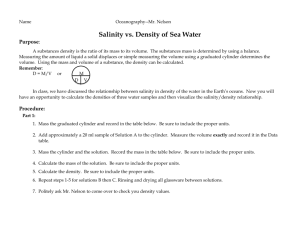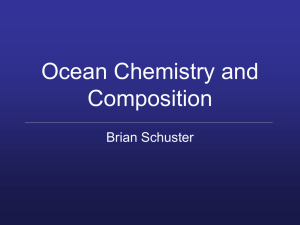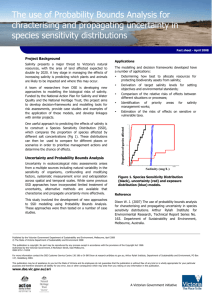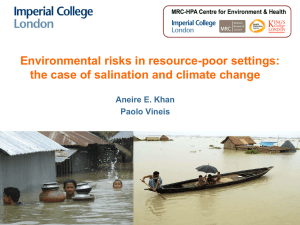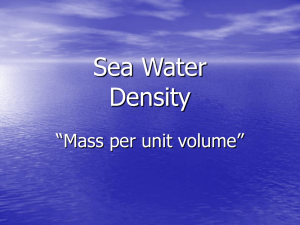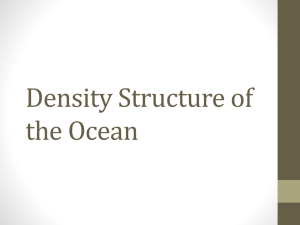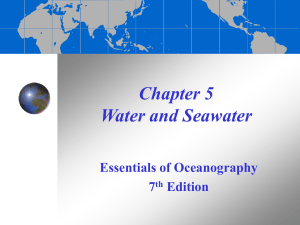The Effect of Ice Formation on Density
advertisement
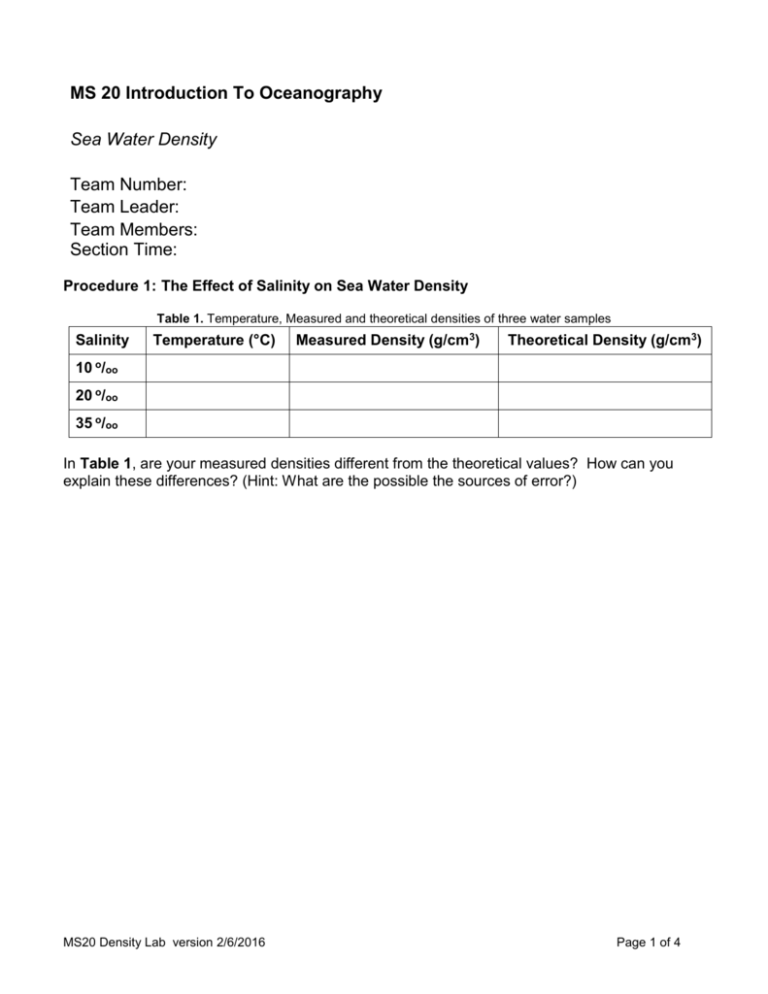
MS 20 Introduction To Oceanography Sea Water Density Team Number: Team Leader: Team Members: Section Time: Procedure 1: The Effect of Salinity on Sea Water Density Table 1. Temperature, Measured and theoretical densities of three water samples Salinity Temperature (°C) Measured Density (g/cm3) Theoretical Density (g/cm3) 10 o/oo 20 o/oo 35 o/oo In Table 1, are your measured densities different from the theoretical values? How can you explain these differences? (Hint: What are the possible the sources of error?) MS20 Density Lab version 2/6/2016 Page 1 of 4 Procedure 2: The Effects of Temperature on Density Table 2. Temperature and density of a 35o/oo water sample Temperature (°C) MS20 Density Lab version 2/6/2016 Density (g/cm3) Page 2 of 4 Figure 2. Density versus Temperature for a 35o/oo water sample Is the change in density with temperature a "linear" change over your experimental temperature range? Assume you were heating up a liter of 20o/oo water with a sunlamp. The temperature increases from 10ºC to 30 ºC. At the same time some of the water evaporated and the salinity went from 20 to 40o/oo. What is the initial and what is the final density? Which is the more important factor (temperature or salinity) affecting the density? MS20 Density Lab version 2/6/2016 Page 3 of 4 Procedure 3: The Effect of Ice Formation on Density Measured temperature of ice formation:_________ theoretical temperature:___________ Why are the two temperatures of first ice formation (measured and theoretical) different? (hint: consider sources of error in the experimental results!) Table 3. Temperature, density and salinity of 35o/oo water before and after ice formation Sample measured density measured temperature salinity (from Fig. One) 5°C 35o/oo water before ice formation brine after ice formation How does the salinity of the brine differ from the salinity of the original water sample? From this, what can you infer about the salinity of sea ice? Procedure 4: Constructing a Swallow float Water Densities: surface (yellow) layer:_____________ deep (blue) layer:_______________ mass of the empty vial and cap:____________ volume of the vial:_____________mL (density of blue layer + density of yellow layer) / 2 = _____________g/cm3 Calculated mass of float:__________ g Would it be possible to make a Swallow float for a fresh water lake? Explain your answer. MS20 Density Lab version 2/6/2016 Page 4 of 4
